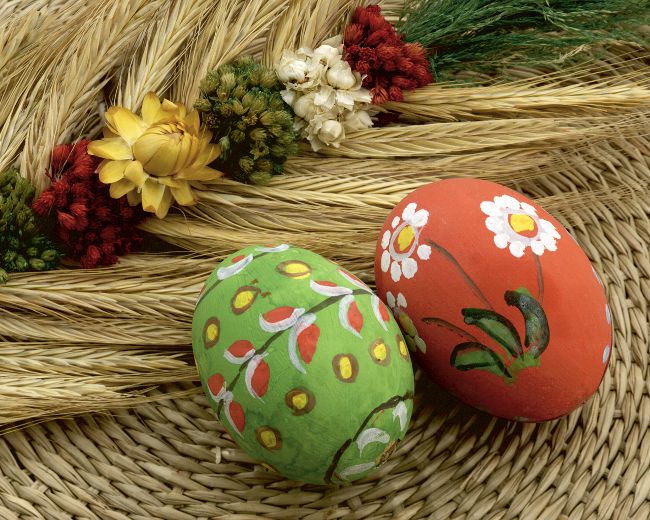Old New Year (New Year in the old style)
 Phrase "Old New Year" the foreigner, most likely, will seem absurd. How is it - old and new at the same time? We are not so surprised, because the old New Year (or rather, the New Year in the old style) - an integral part of the New Year holidays in the CIS.
Phrase "Old New Year" the foreigner, most likely, will seem absurd. How is it - old and new at the same time? We are not so surprised, because the old New Year (or rather, the New Year in the old style) - an integral part of the New Year holidays in the CIS."The Old Style" in the people it is customary to call the Julian calendar. While most of the Catholic countries had already switched to the more perfect Gregorian calendar, the Russian Empire was still living according to the Julian calendar, which "lagged behind" the Gregorian calendar for two weeks. In 1918, in Russia, still introduced a new chronology, and a tradition arose to meet two new years - according to the Gregorian calendar (new style) and Julian (old style). The New Year is celebrated according to the old style on the night of January 13-14, according to the Gregorian calendar.
In addition, the old New Year is an opportunityTo celebrate the coming of the new year for those who keep the Christmas fast. The fact is that the Russian Orthodox Church has not yet switched to the Gregorian calendar, therefore, all church holidays occur according to the old style (the Julian calendar). As a result, the New Year (the one that is celebrated from December 31 to January 1) falls out for Christmas. It means - no meat, no alcohol. But in the old New Year the post has already ended and you can celebrate with all your heart.
In addition to Russia, the old New Year is celebrated in other countries of the former Soviet Union - Ukraine, Byelorussia, Moldova, Latvia, Armenia, Georgia, Uzbekistan, Kazakhstan, etc. In addition, New Year in the old style note in those countries in which the church did not switch to the Gregorian calendar. This is Serbia (where it is called the Serbian New Year), Montenegro, Macedonia and some German-speaking cantons of Switzerland.
Evening on the eve of the Old New Year people call a generous evening, or the day of the Monk Melania. AT A generous evening they prepared a "rich" kutya, covered a rich table and invited guests.
At dawn on January 14, on the day of Vasiliev, it is customary sow. Young people gather grain in a bag and mittenand go to relatives and friends (in the first place - to the godfathers). Going into the house, the sowing (milling) throws a grain around the house and wishes everyone a happy New Year and a good harvest. It was believed that the first person who came to you to sow, will bring happiness in the new year. The rite of sowing is often accompanied by special seeding songs.
Seeding songs in Russian
I sow, I weave, I sow
Happy New Year;
Open the gate,
Serve a nickle,
If there is no pyataka,
Then the cow by the horns.
* * *
I sow, grow, sow,
Happy New Year.
Hello, the owner with the host,
Happy New Year, with a holiday.
I sow, grow, sow,
Toh-toch, tararoch,
Father, God, peas,
Zhito, wheat,
Every kind of hedgehog.
* * *
We sow, we weave, we sow,
Happy New Year congratulations.
Happiness will be yours,
The harvest is big.
Beget your oats,
To two meters tall.
Breed from you wheat,
And peas and lentils.
So that the guests will not hesitate
It was in the house for a year!
There's always a pie on the table.
Easy-easy to you!
* * *
I sow, grow, sow,
Happy New Year!
Breed, wheat,
Peas, lentils!
On the field - shocks.
On the table - pies.
I sow, grow, sow,
Oats, rye,
By the grace of God!
Seeding songs in Ukrainian
Сію, вію, посіваю, з Новим роком задоровляю!
On shchastya, on zdorja that on Noviy rik,
Shchob urodilo krashche, nizh torik, -
Zhito, wheat and every other crop,
Konoplі pіd stele on the great curls.
Be healthy in the future.
Give, God!
* * *
Сію, сію, засіваю,
Your hut does not escape,
W. We bring rock to the hut,
Щось вам маю віншувати:
Щоб діти всі здорові,
Їли кашу всі готові,
If you need them, sweat them.
And we have a penny for a penny!
* * *
Сію, сію, засіваю,
З Новым роком вас вітаю!
At that noviy rіk,
The Shchob has begot more,
Ніж торік!
* * *
Сієм, вієм, посіваєм,
З Новым роком вас вітаєм
On shchastya, on zdorja
On the New Ric!
The shchob vrodilo krasche, nizh torik.
Коноплі під стелю,
A lion to colin,
Щоб вам, господарі,
The head is not dead!














